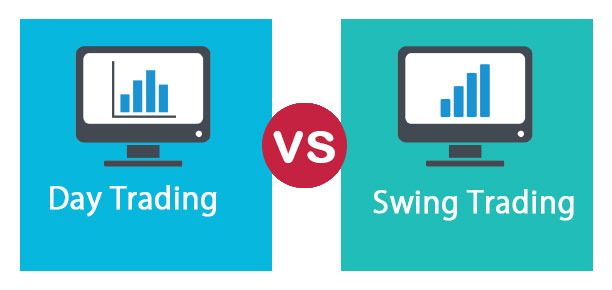Know the differences between day trading and swing trading
Now that you have decided to trade in the share market, assess how active you want to be. First, you must figure out whether you want to trade on a regular basis or follow the buy-and-hold method. This will help you to pick the stock trading style that suits your time frame.
Day traders and swing traders both trade on a regular basis. Their aim is to earn profits from short-term stock price movements. Day traders may conduct dozens of trades within a single trading day. Swing traders, on the other hand,are involved in trading that runs for several days and weeks.
Wondering which trading style is better? Take note of the key differences before deciding how you should trade.
- Time required
Both trading styles need time, but day traders need to devote more time on a daily basis. A day trader’s goal is to profit from price fluctuations in the share market. So, they take calls based on technical analysis and charting systems. Day trading is like a full-time job. A day trader must watch out for every opportunity to make a trade. A day trader does not hold on to any securities.
In comparison, swing trading can be a part-time activity. For instance, traders who follow a daily chart may take less time to discover new trades and update orders on current positions. As swing trades are less affected by second-to-second changes, constant monitoring is not needed.Swing traders buy securities and hold on fora certain period.Sometimes, it might take longer for a trade to work—maybe a few weeks or even months.
- Number of trades per day
In day trading,traders carry out many trades in a single day.The number could be as little as one trade or it may go all the way up to a hundred.Some day traders set a limit of three to five trades each day at first. The more trades you make, the higher the chances of gaining or losing money.
Swing trading does not require you to place any particular number of trades daily. You do not even need to trade every day. Swing traders may carry out trades once every two to three weeks. The longer holding period allows the stocks to ‘swing’ from one point to another.
- Efforts needed
To book profits from day trading, you need to understand technical analysis and charting. Since day trading is quite exhaustive, you must remain calm under pressure. The profit and loss in day trading can be substantial.So, do your planning beforehand.
People who want to trade in the share market while holding down a full-time job should opt for swing trading.You will need a little knowledge and some capital to start with. To be a successful swing trader,you will need to be familiar with fundamental and technical analysis.
Conclusion
There are pros and cons to both day trading and swing trading. Day trading is a full-time activity that requires specific skills. On the other hand, swing trading can be taken up by anyone who wants to dabble in the share market. So, before you choose, consider the time you have to spare, your investment capital, and your risk appetite. If you need help with your stock trading picks, open an account with a brokerage firm of good standing like Kotak Securities. By gaining access to their comprehensive stock analysis and technology-backed solutions, you will be able to trade with ease in the stock market.










